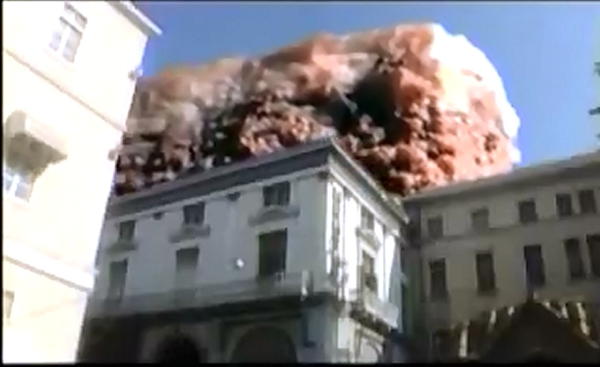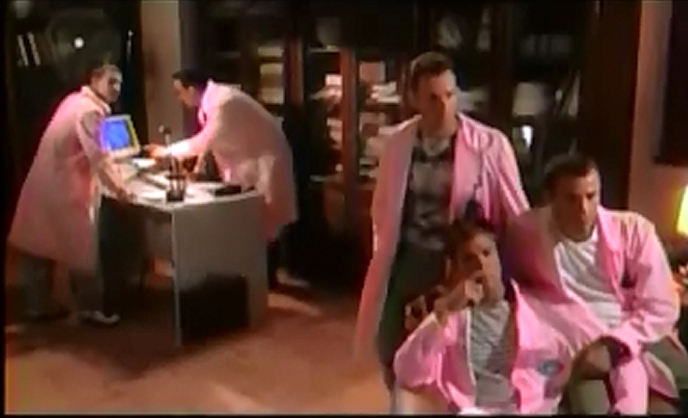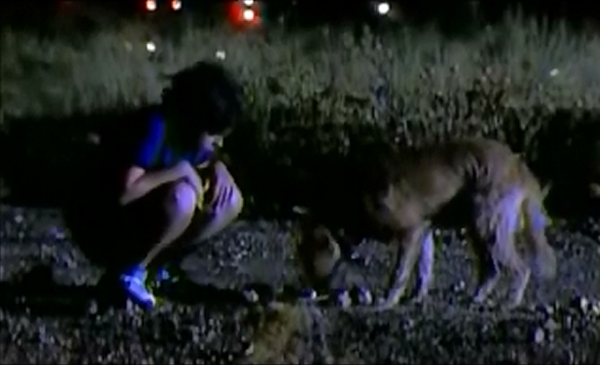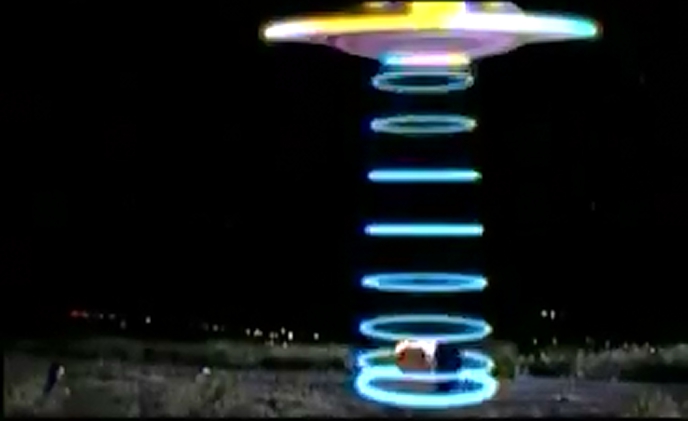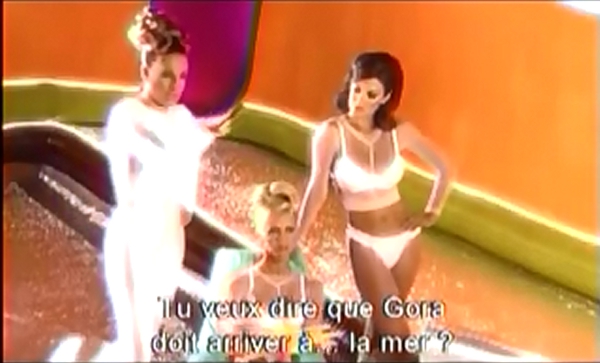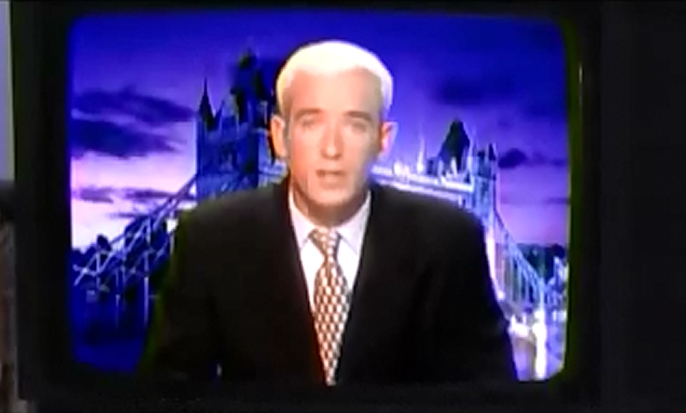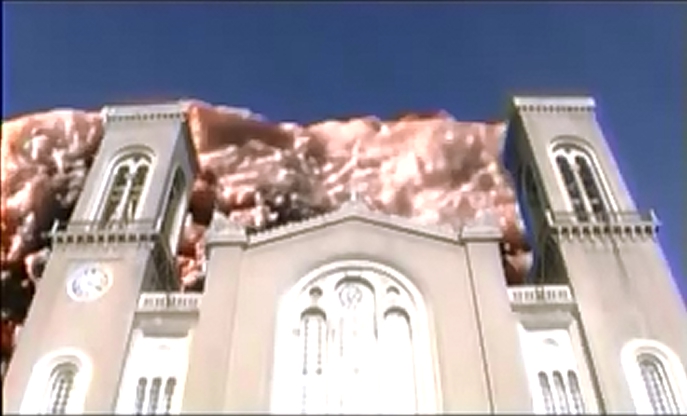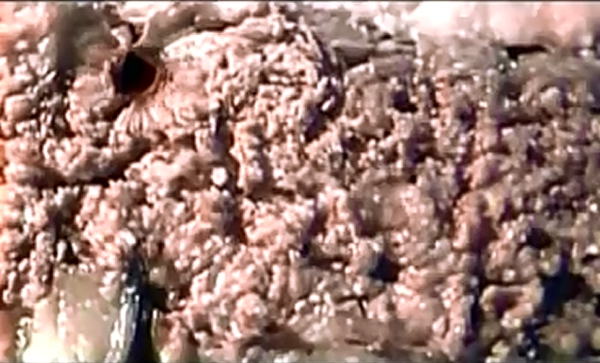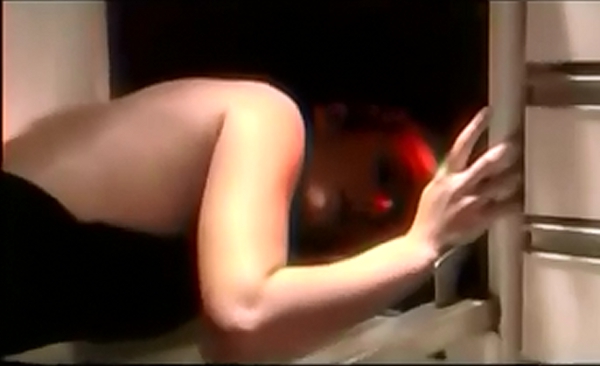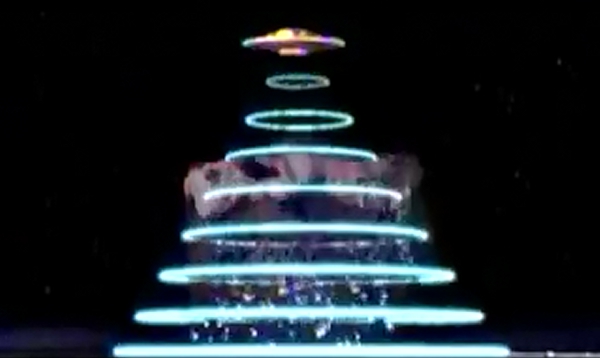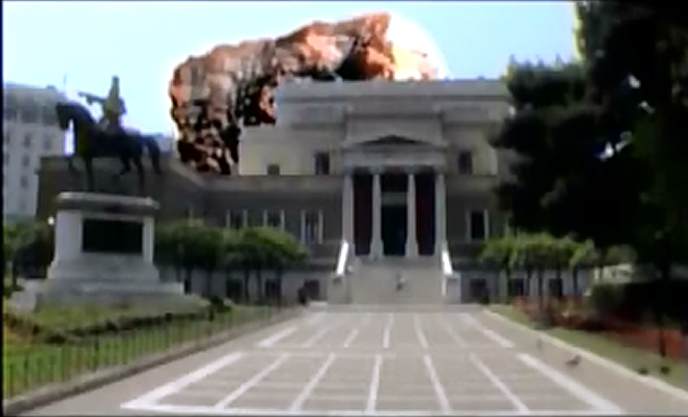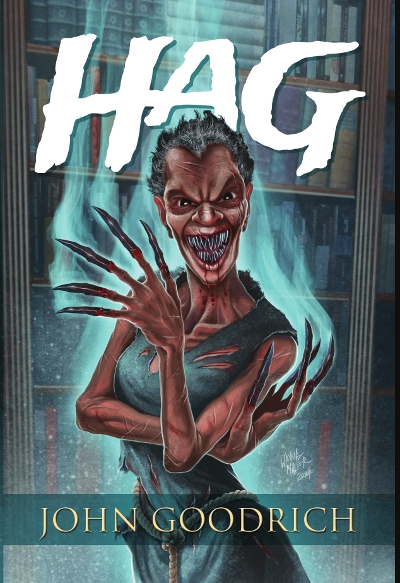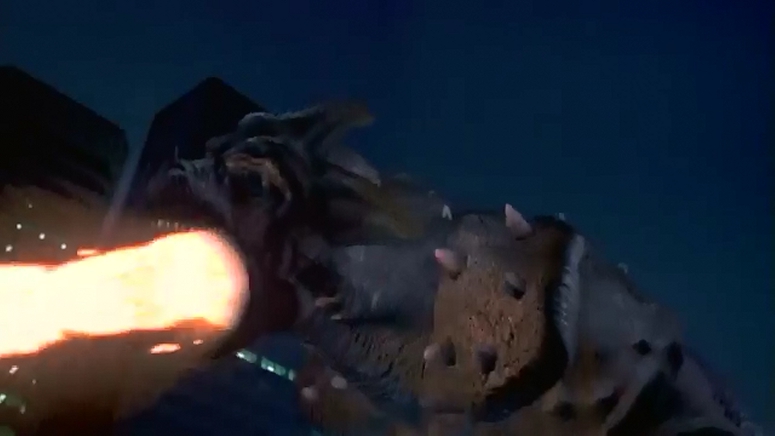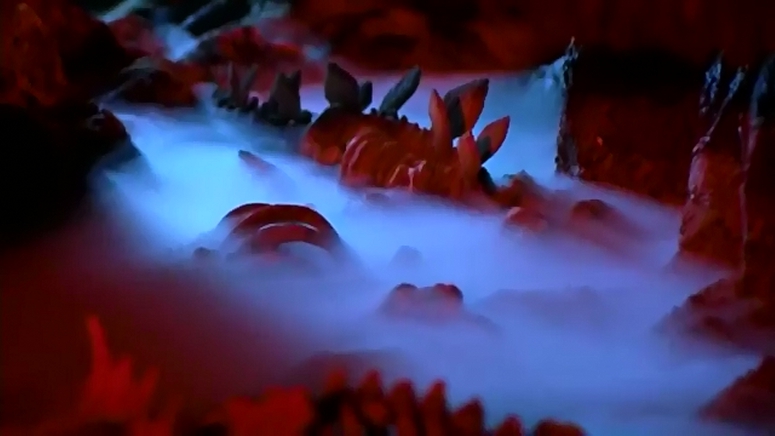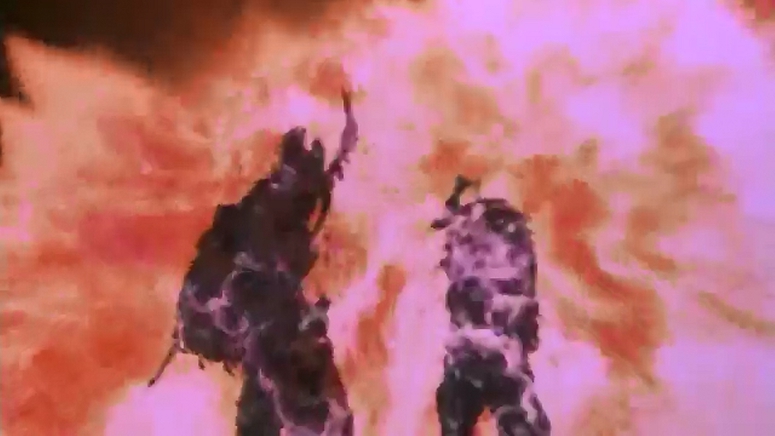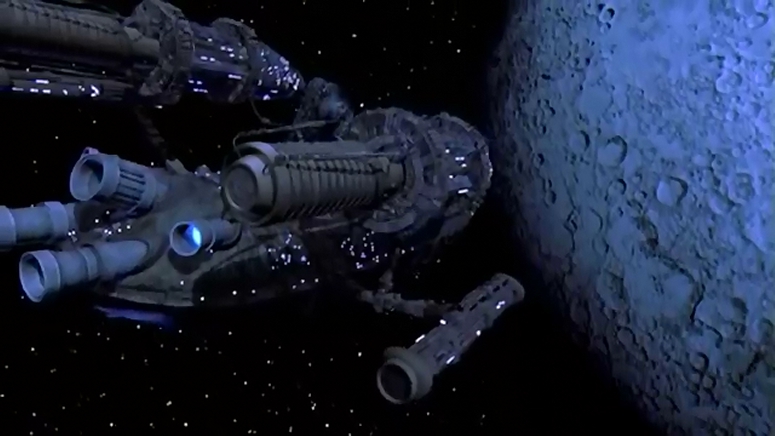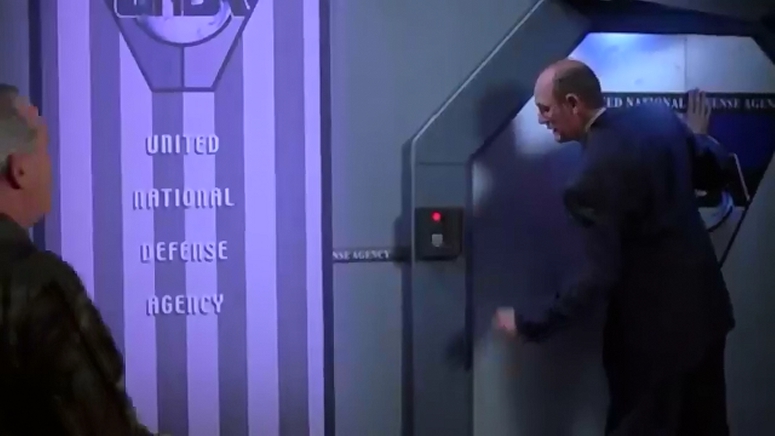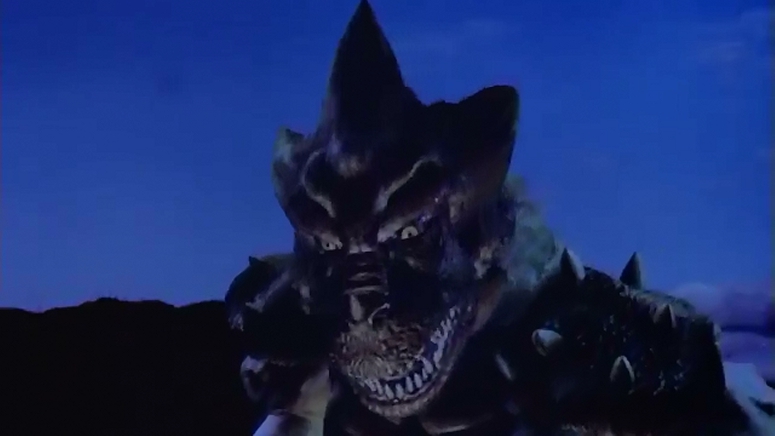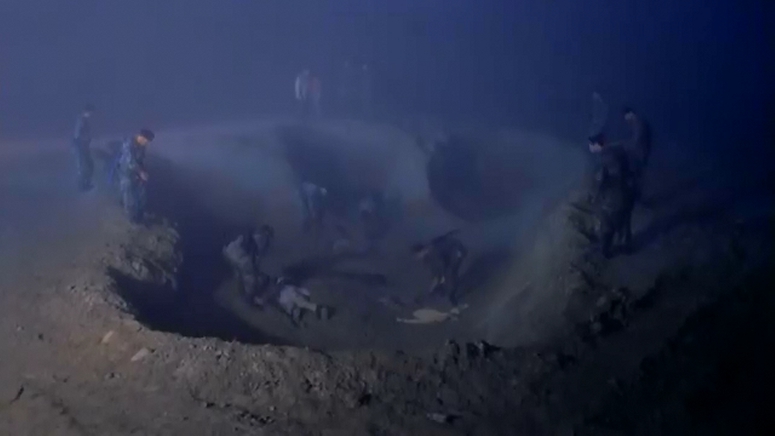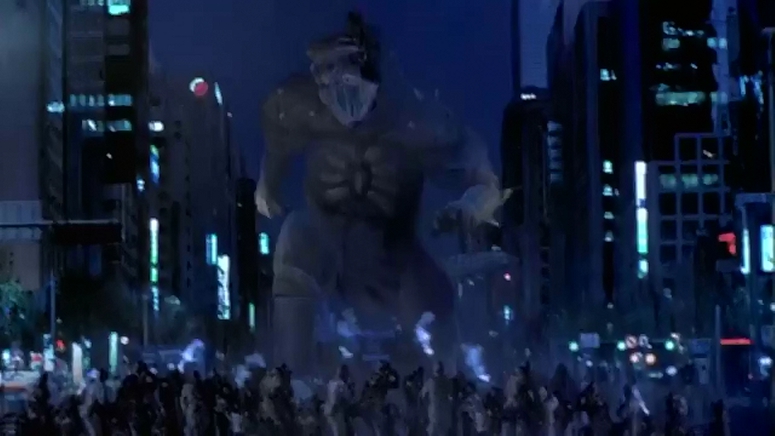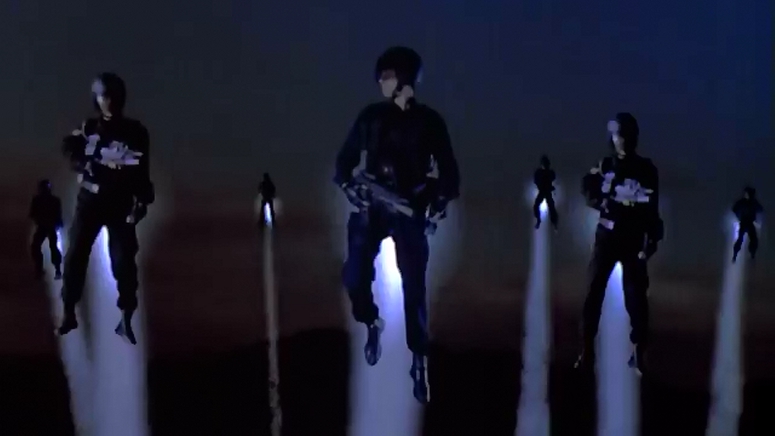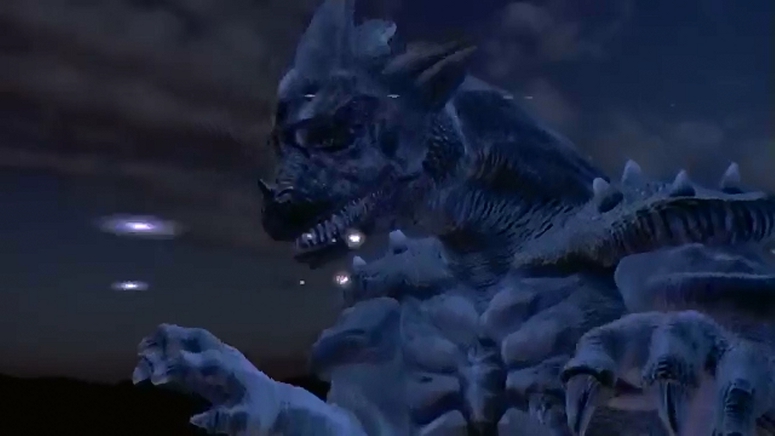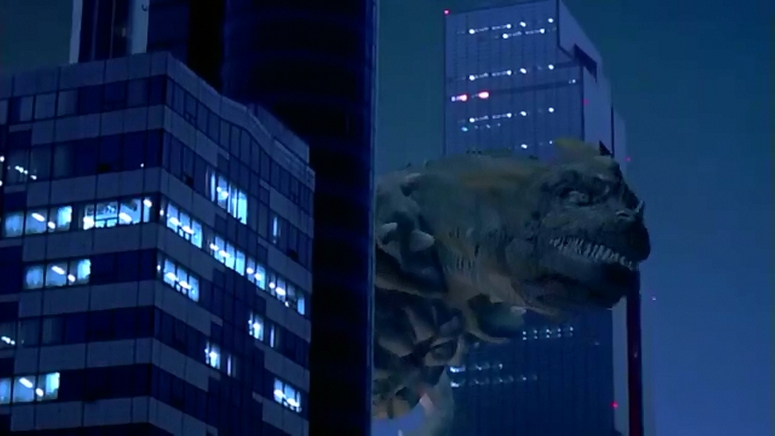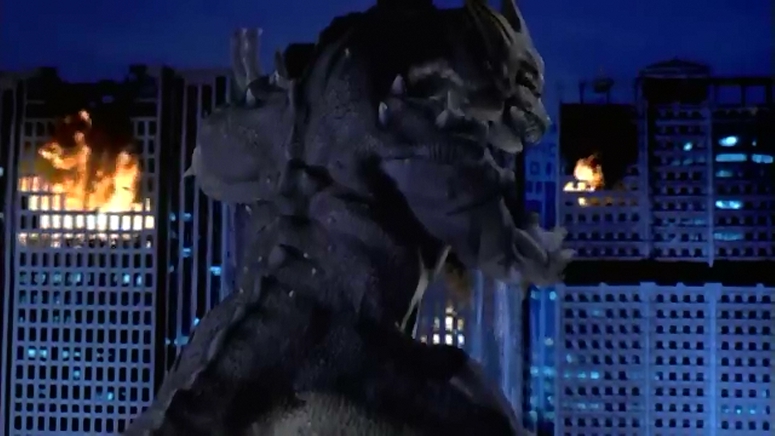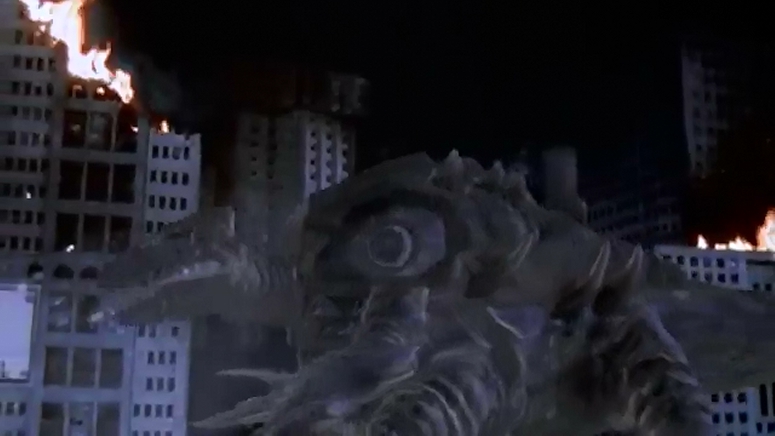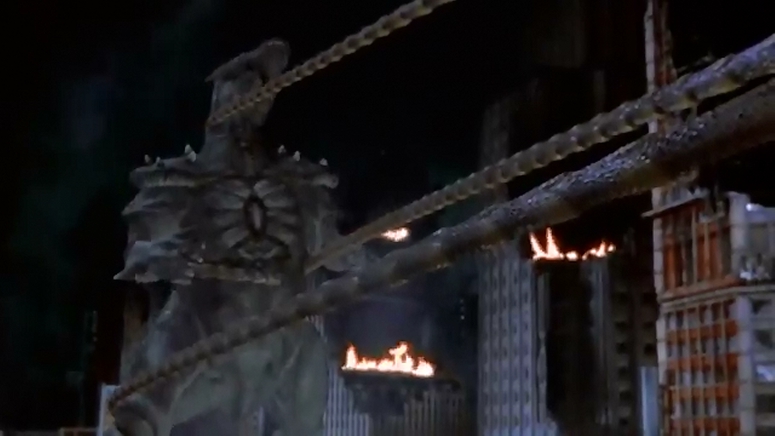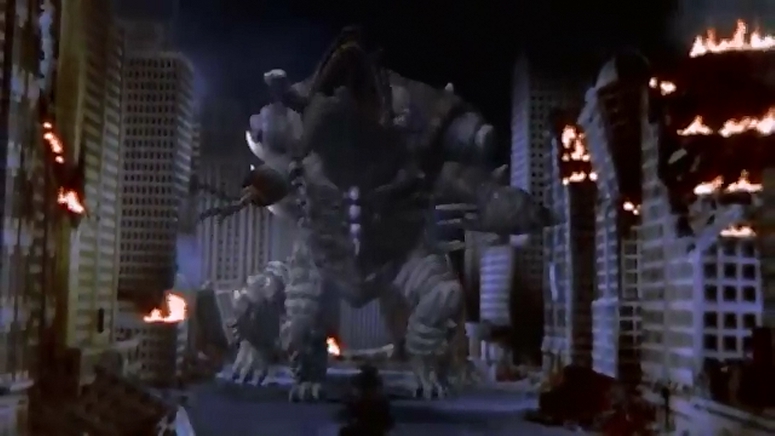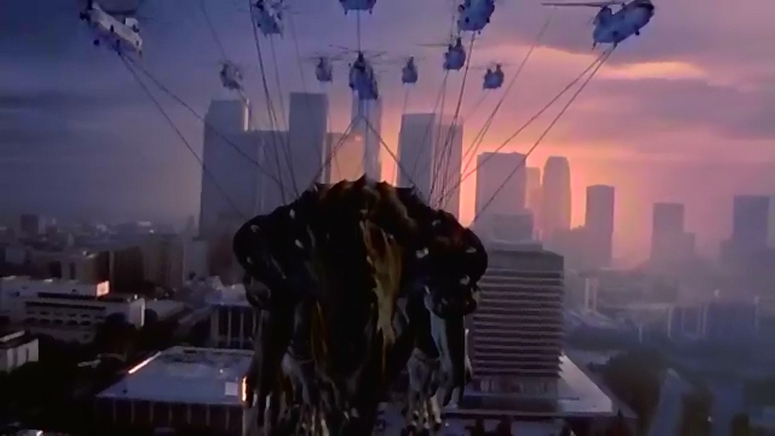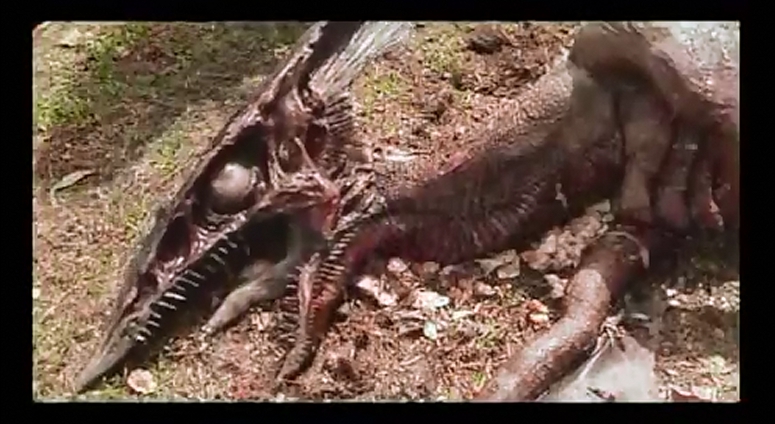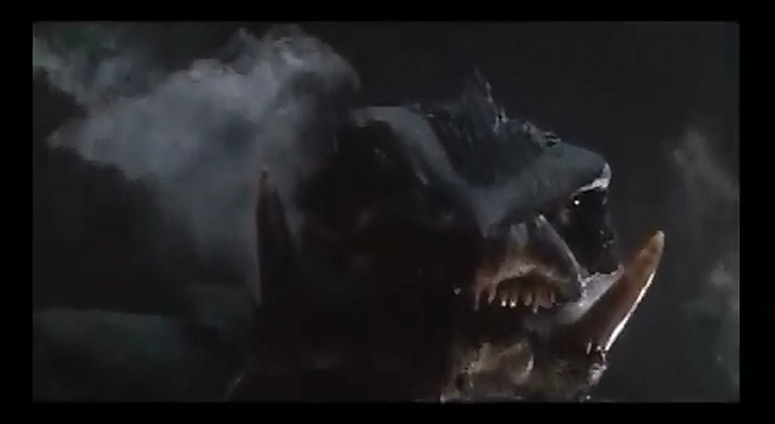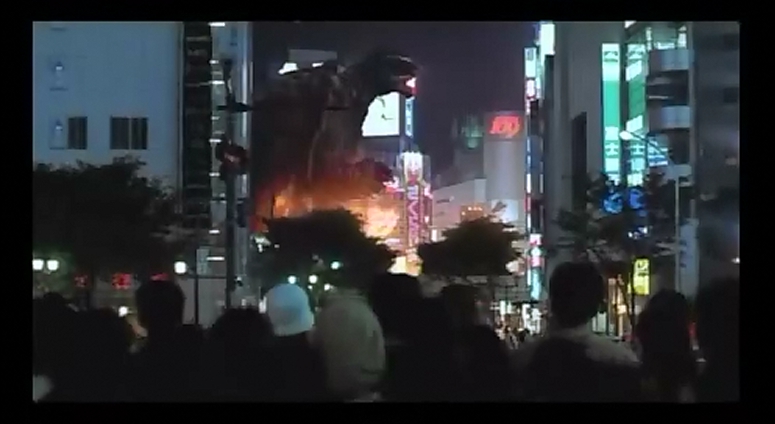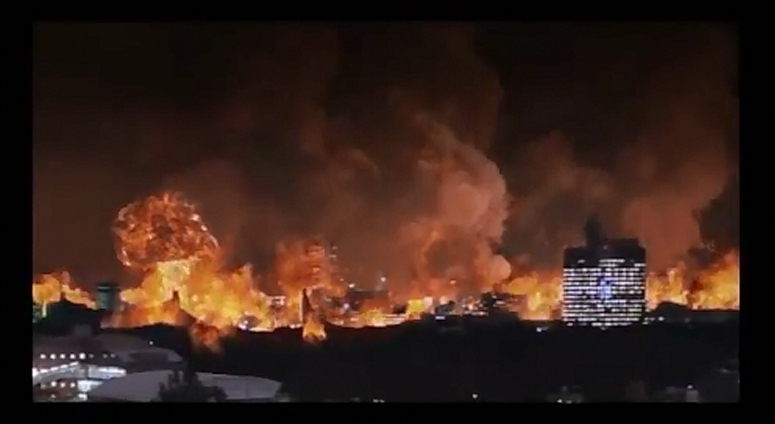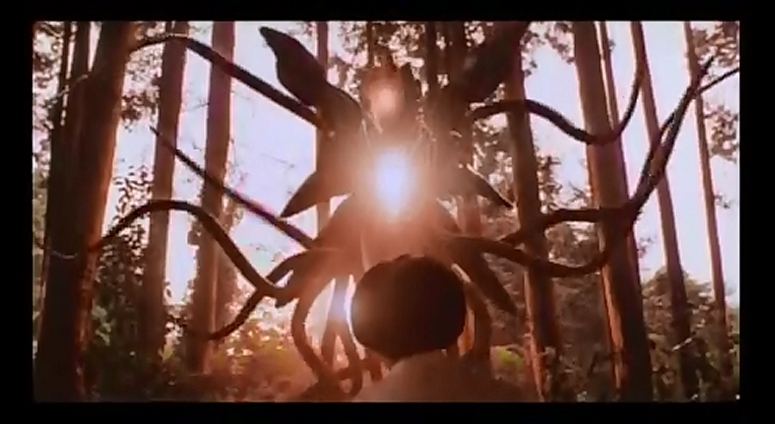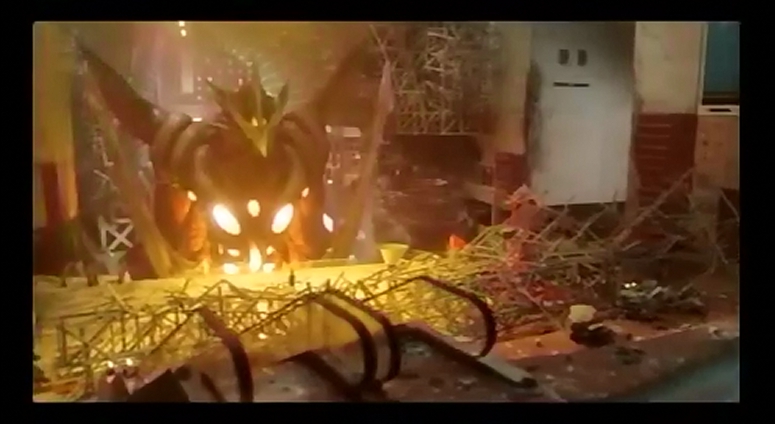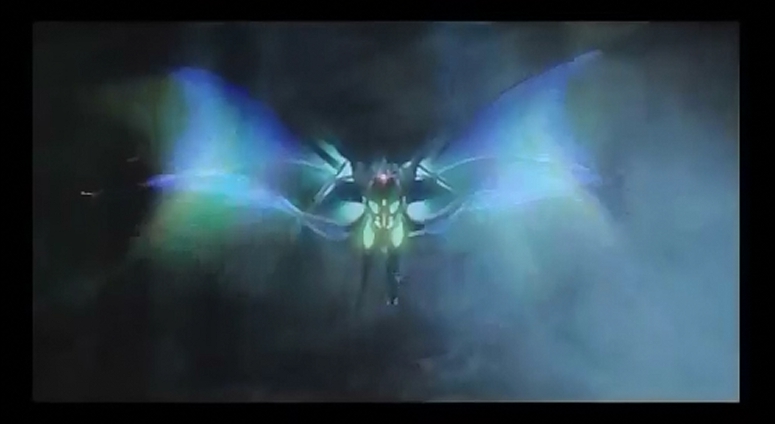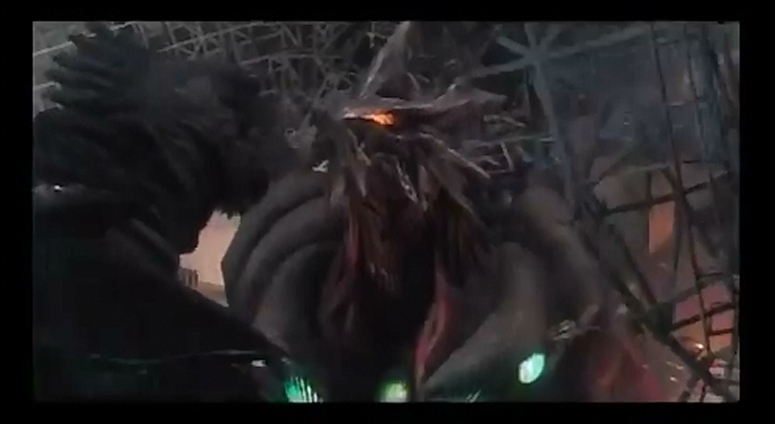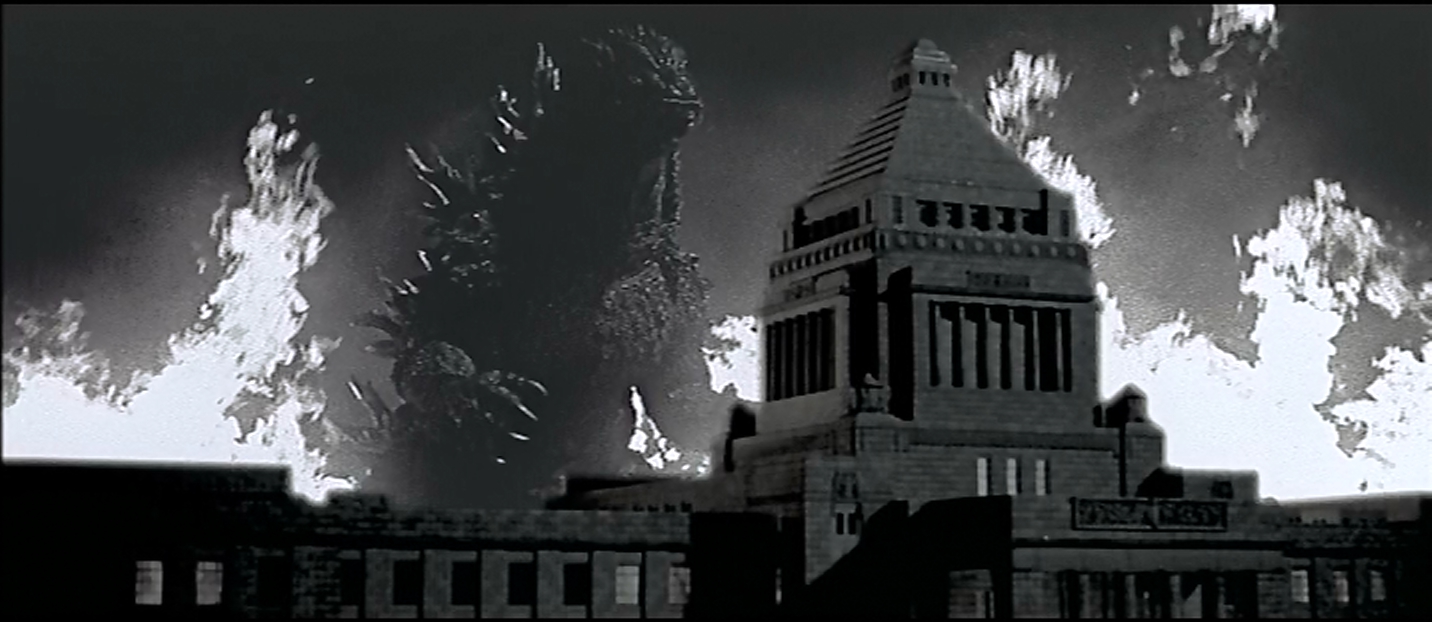
Despite this, the antagonist monster comes from Rodan. Did Rodan happen in this continuity? It's possible, since both Rodans die in the volcanic eruption. When discussing Godzilla and continuity, it's really best not to look too deeply for consistency.
In a secondary piece of back story, the Godzilla attack on Osaka in 1996 is shown. Again, the military is valorized, brave men and women who stand between Godzilla and ordinary society. In 1996, they are ineffective, but by 2001, they have created the G-Grasper unit, again an elite unit that the rest of the military aspires to be part of. And they have cool jackets, aviator glasses, a baseball caps.
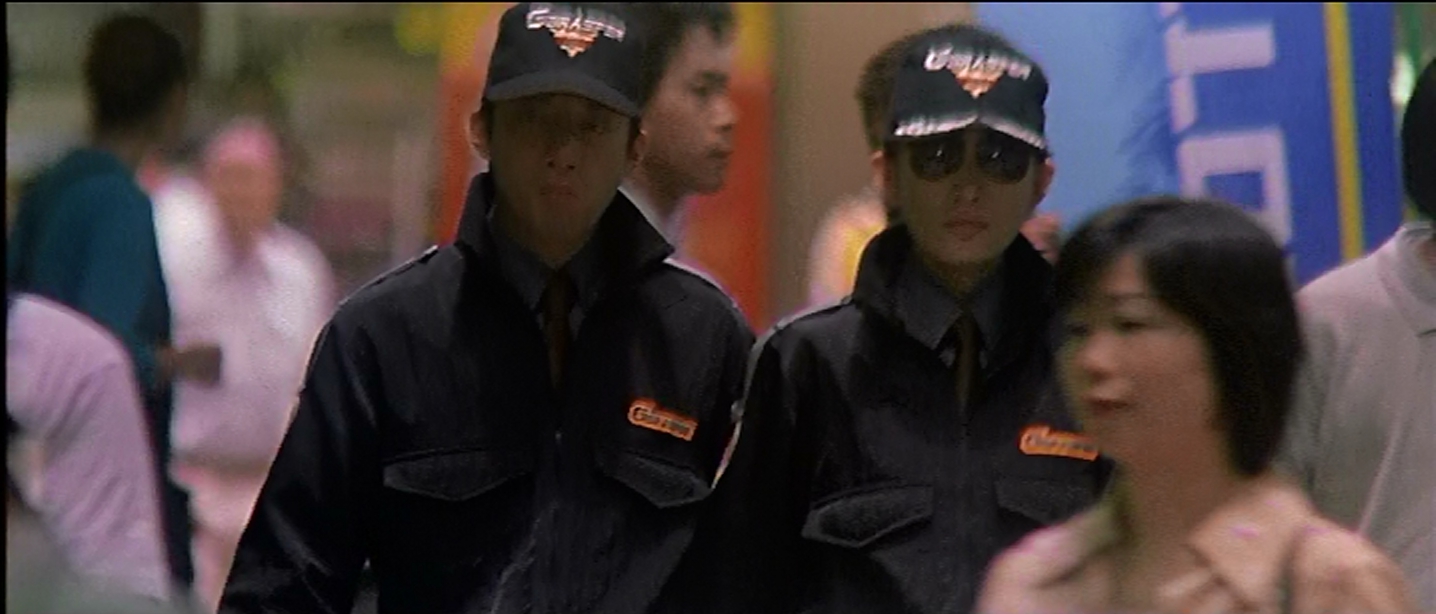
G-Grasper also has a version of the Super X, the Griffon, a large vector-thrust aircraft. Unlike previous Super X versions, it is not designed to take on Godzilla directly. It has no fire mirror or armor, relying on agility. It does have some pretty potent photon guns, however, certainly enough to get Godzilla's attention.
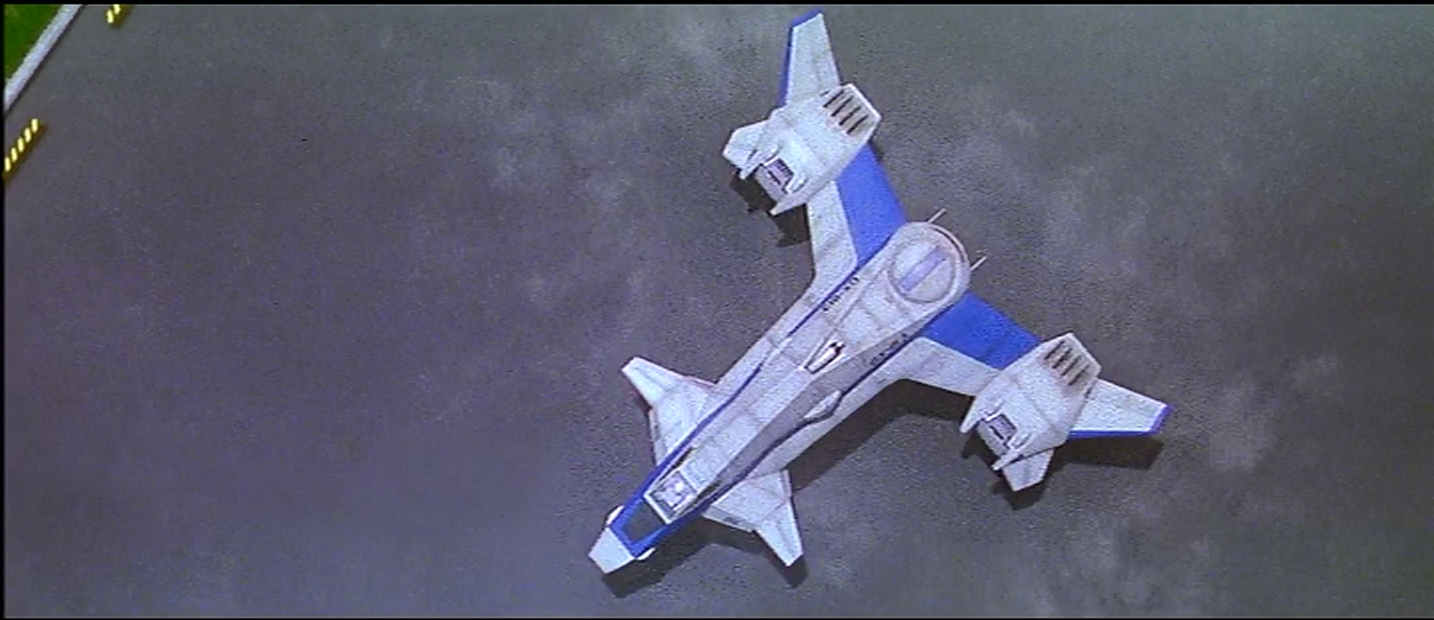
But the military still does best with civilian contractors. And the military needs an inventor, who also serves as the audience's intermediary so the military can explain what it's doing. This Godzilla, for example, is predictable. It only comes when there's a radioactive energy source. Japan has been surviving on clean solar, wind, and other clean energies.
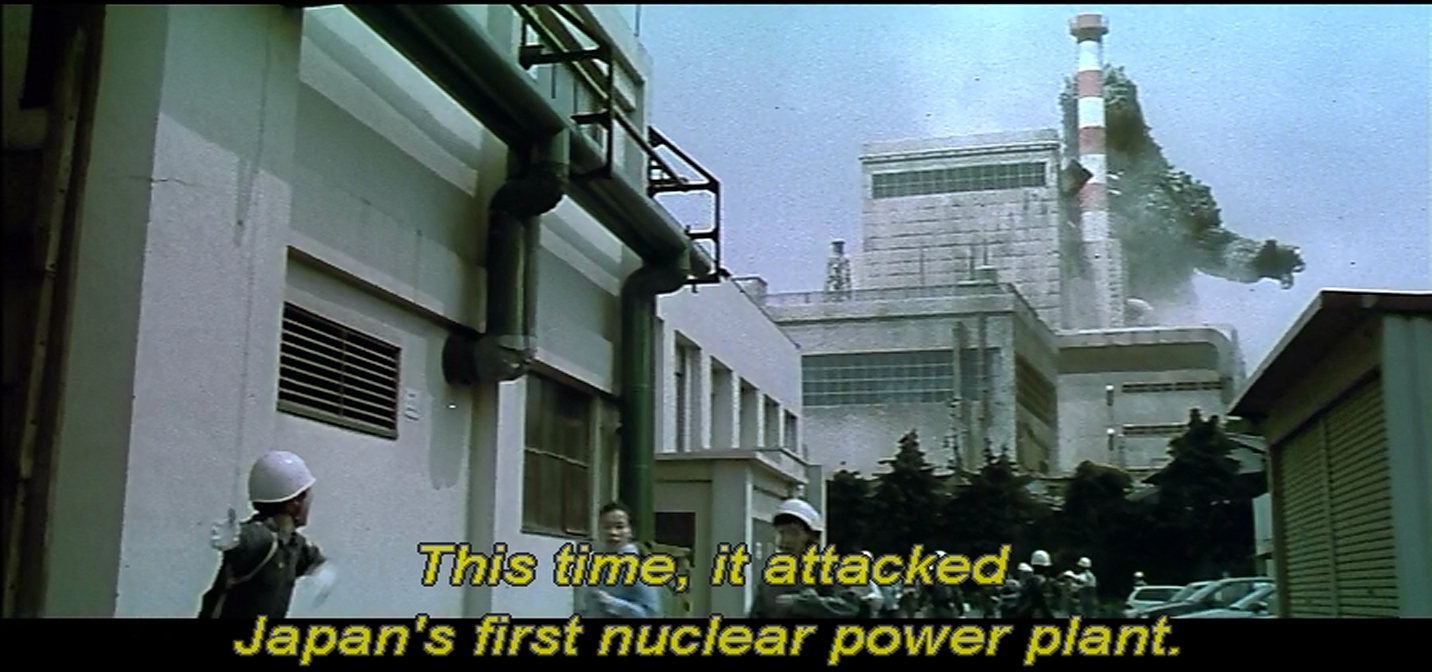
The weapon to take care of Godzilla this time around is the Dimensional Tide, a teeny-weenie black hole designed to be deployed by a satellite. On a test shot, it opens a dimensional hole to the past. A meganulon flies through the hole, deposits its egg, and then chucks off back into the past.
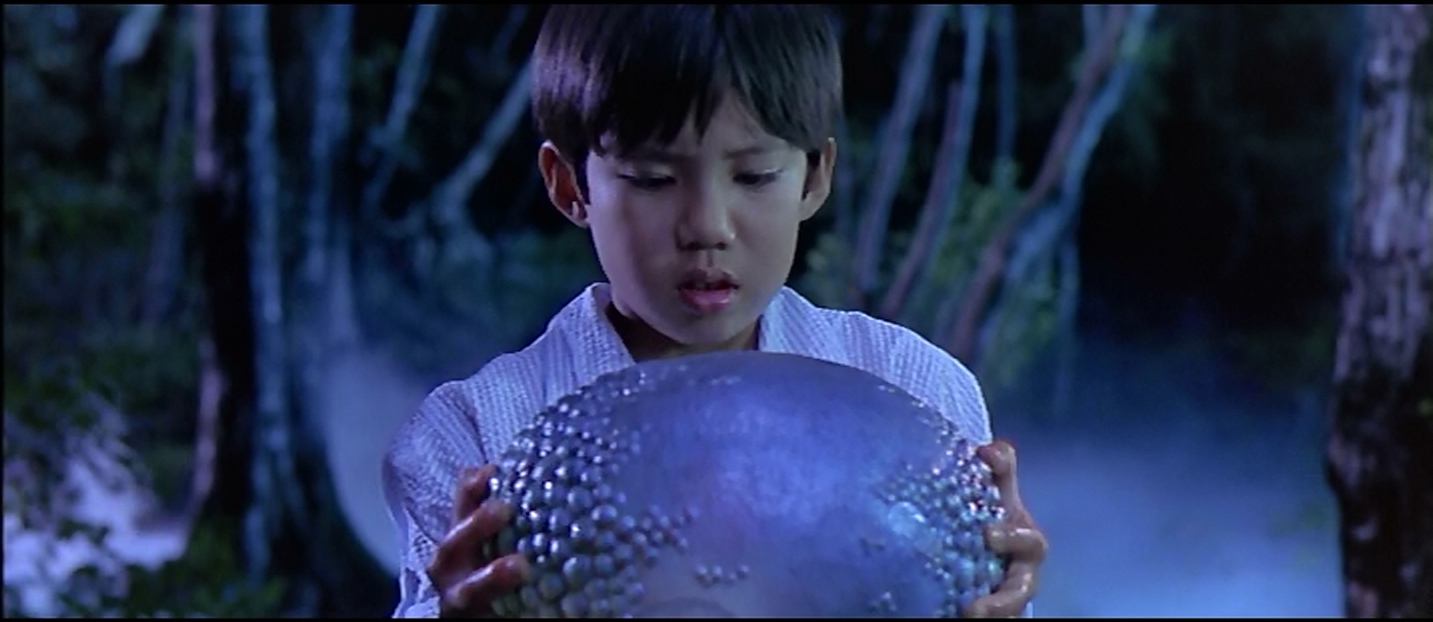
Later, a huge collection of the smaller dragonflies molt on a vertical surface as soldiers shoot at them. Wait, a mass of human-sized insectoid monsters and a larger, primary monster? Where have I seen this before? Oh yes, Gamera: Attack of the Legion.
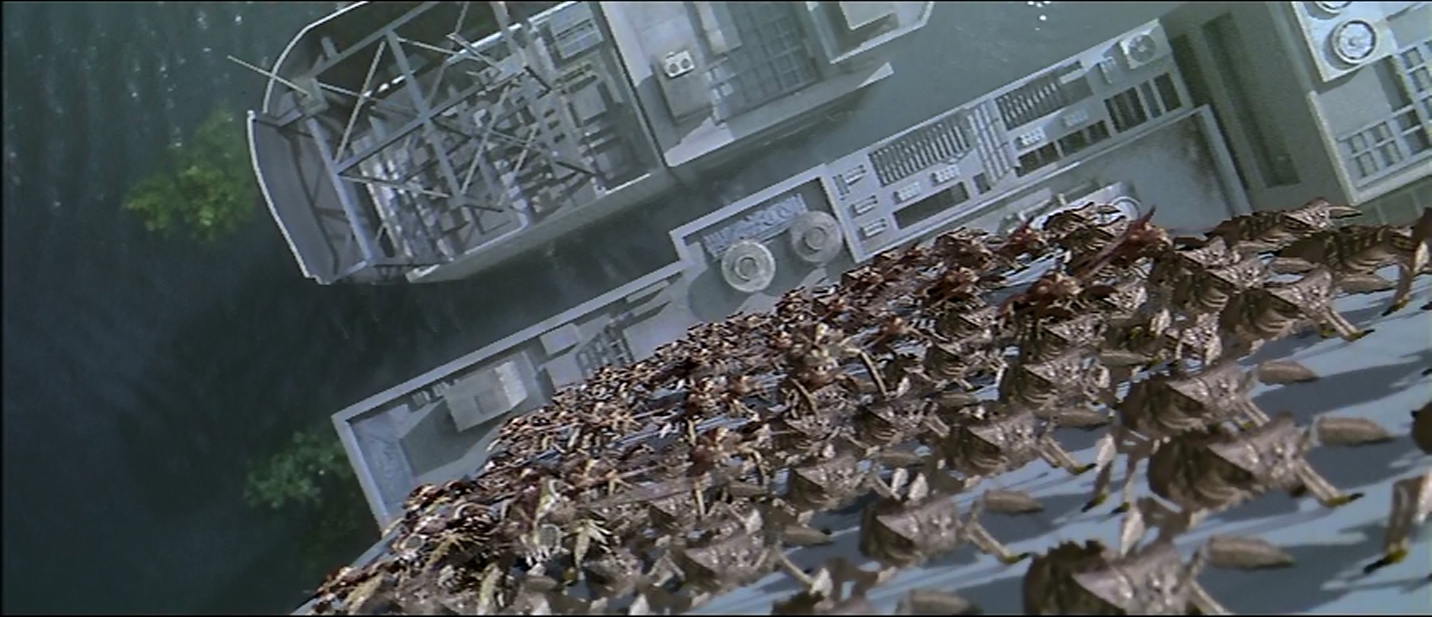
When they reach Godzilla, they attack, and begin to drain him of vital energy. At the same time, the cloud of giant insects prevents the Dimensional tide from locking onto Godzilla. But they take the shot, and Godzilla takes a small black hole to the face. And then gets back up.
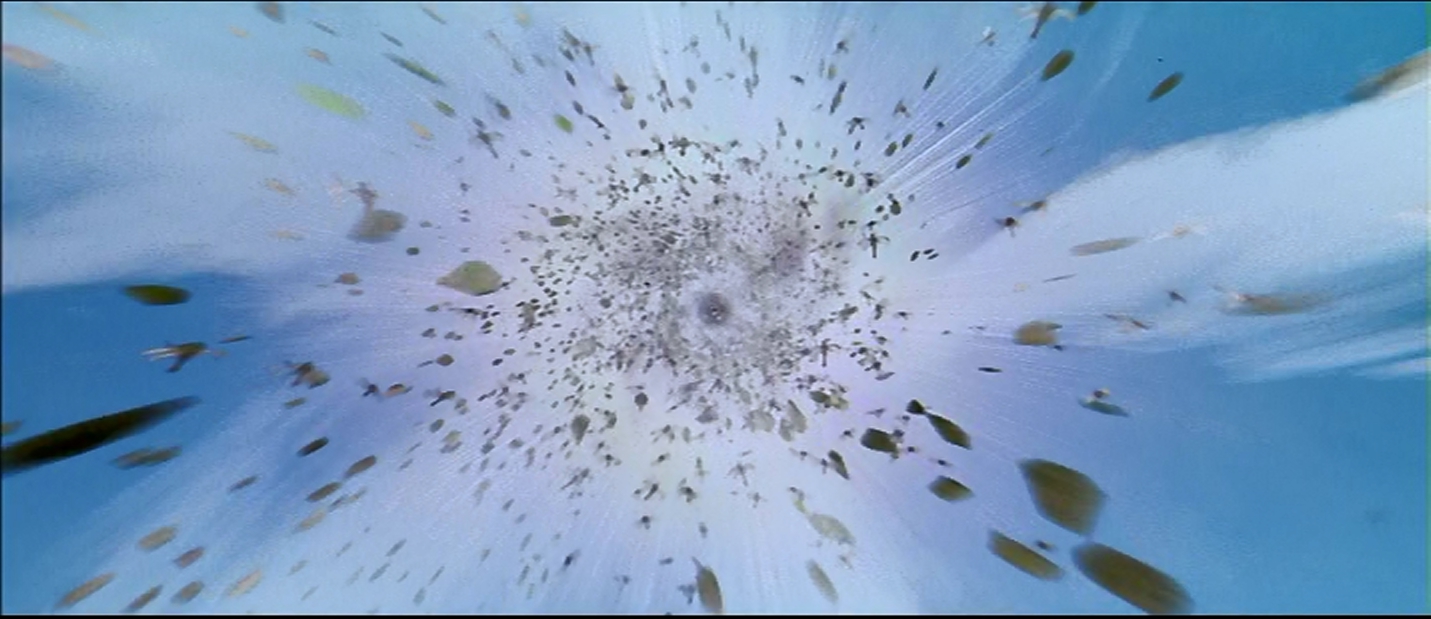
When the giant Megaguirus finally shows up, it's an interesting monster. A huge, spike-covered dragonfly. It can vibrate its wings and create cutting waves, and like the smaller versions of itself, it can take energy from a target with its stinger. The cry is uninspired, and the combat with Godzilla is dull. Kaiju fighting draws heavily on sumo wrestling. Without this, the combat is often very unsatisfying. Even Ishiro Honda didn't do particularly well in Godzilla vs Mothra, although he brought in some innovations, such as Mothra dragging Godzilla along the ground. Here we have no such creative spirit.
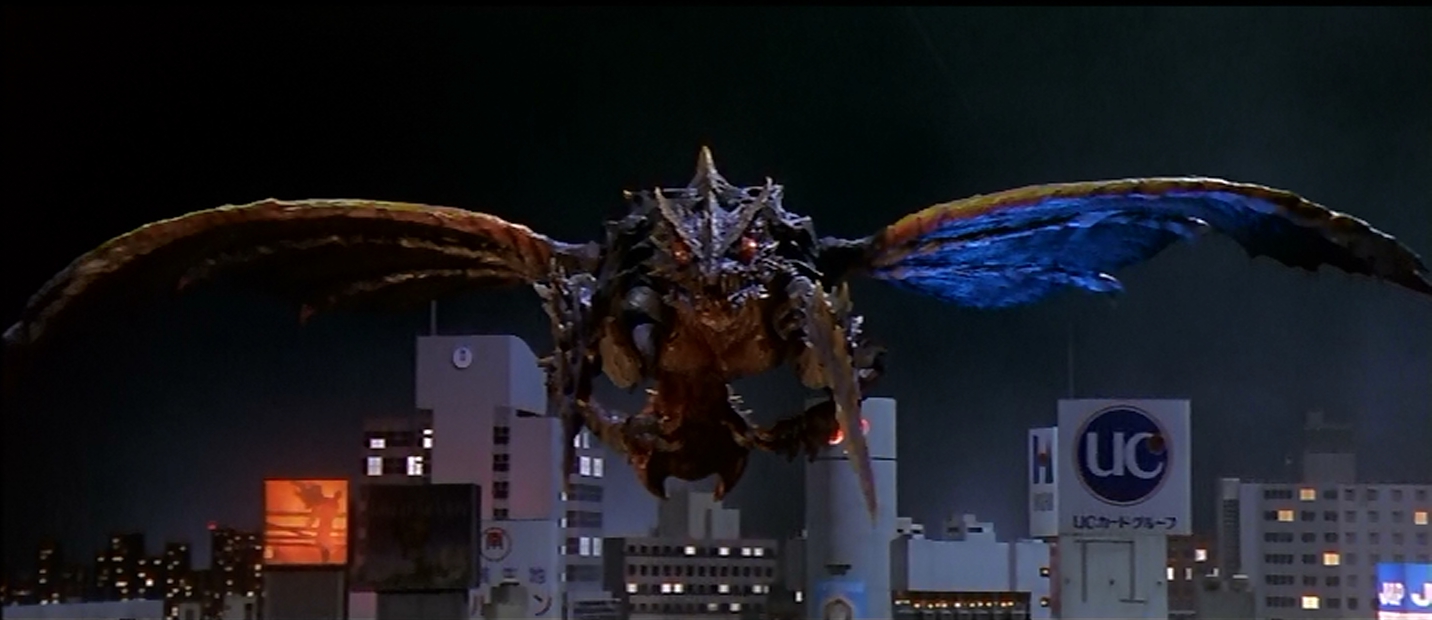
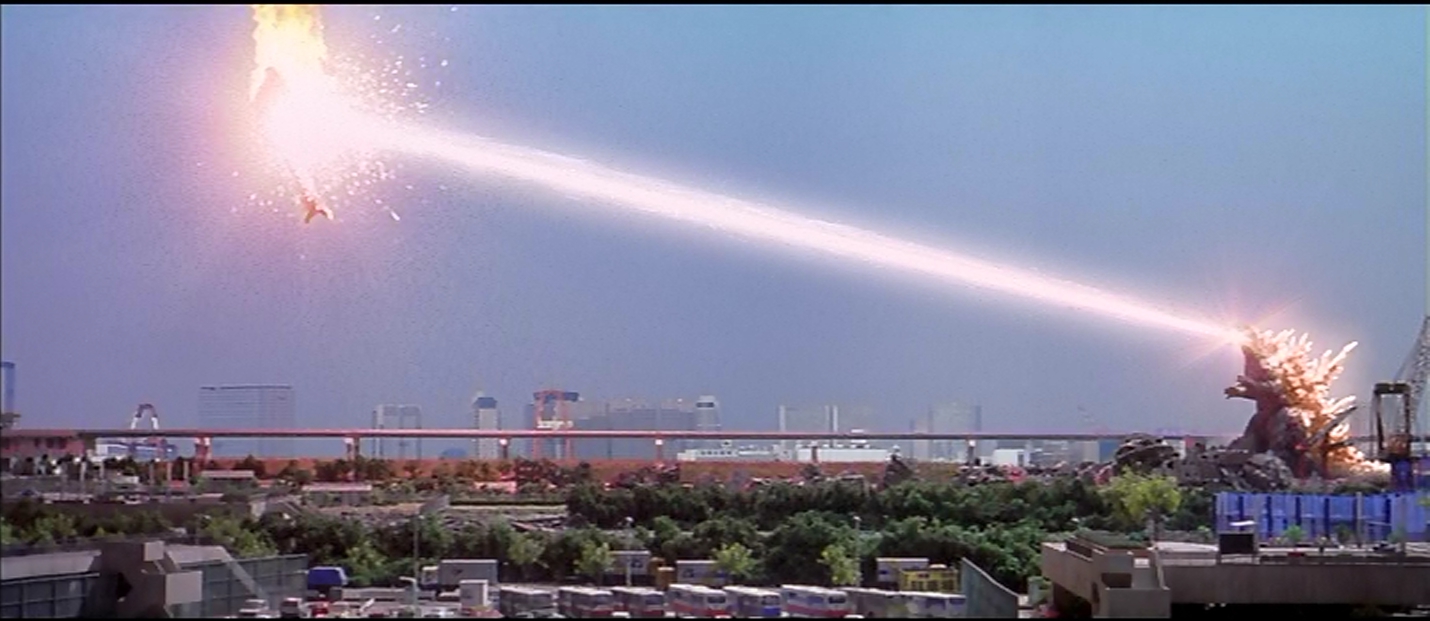
After surprisingly uninspiring fight, Godzilla destroys Megaguirus the way we want him to--a blast of his atomic heat ray. The Big G then goes on a rampage across Tokyo, heading for the Science Institute. It turns out Government minister/industrialist kept the plasma energy secret, even after it was banned in 1996. They fire the Dimension Tide again, and Godzilla seems to get annihilated by the black hole, and Tokyo has a gigantic crater in its center. Which is kind of odd. Godzilla had headed straight for one building to destroy the Plasma generator. Clearly the Dimensional Tide leveled a lot more than Godzilla already had, and possibly more than he would have. So the military, as with Godzilla 1998, causes more damage than Godzilla does.
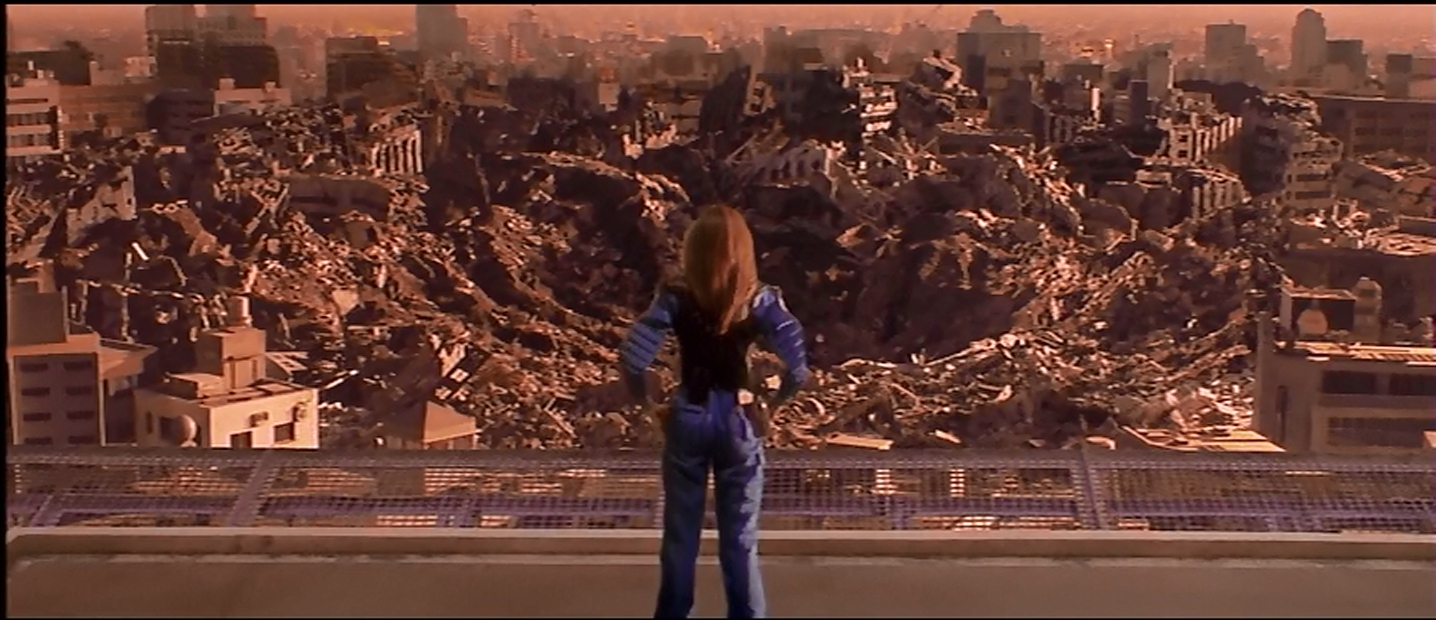
Despite some interesting ideas, the film plods. Until the frenetic pointlessness of Godzilla: Final Wars, this will be a low point, financially and artistically, of the Millennium series. Often, when Godzilla's on screen, he's in close-up as if it were an actor, rather than far shots that make the monster feel large and powerful. There isn't a lot of Godzilla smashing stuff, and the fight with Megaguirus, as noted, is uninspired. These factors, combined with the uninteresting human plotline, lead to a weak film.
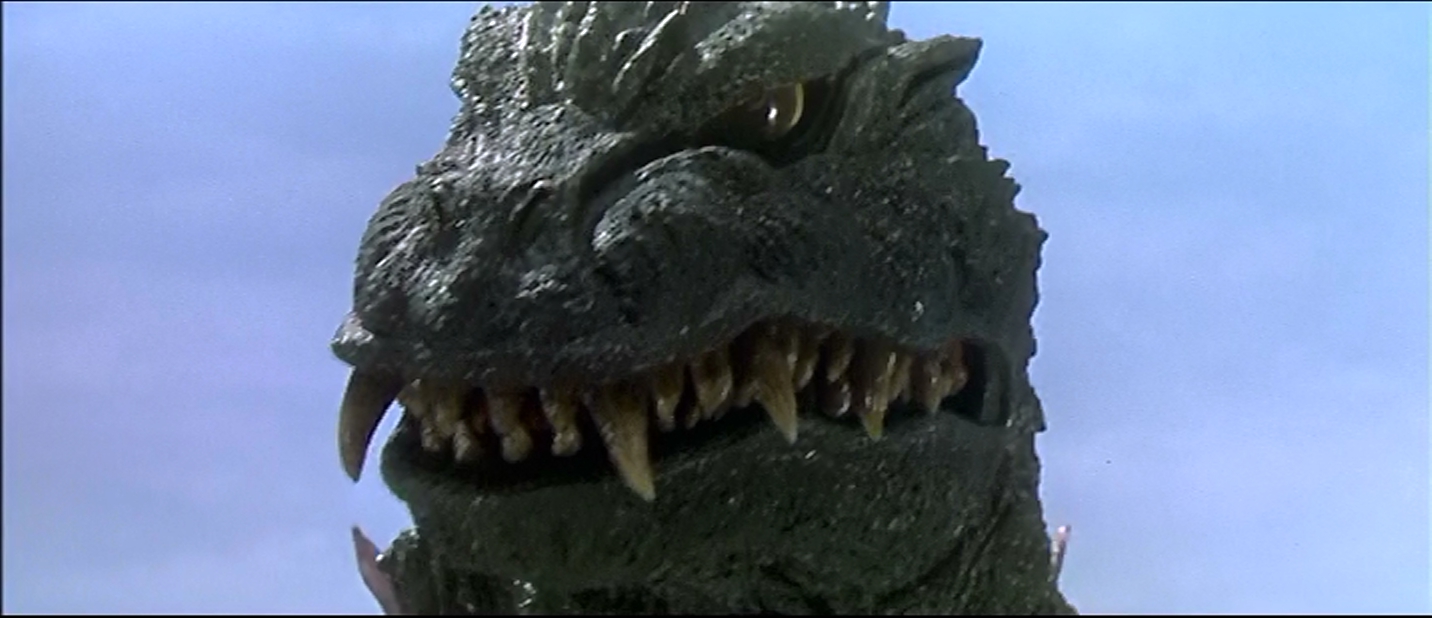
It does have one enormously redeeming feature, however. Godzilla has long been in the shadow of Ikiru Ifukube's iconic music. Films of the franchise that have tried other styles and have usually come off as weak, or quickly dated. Michiru Ôshima is the first composer to successfully strike out on her own, creating a drum-heavy, ominous heart-beat like, followed by somber brass, a sufficiently resonant theme for Godzilla. While her music here is good, her scores for Godzilla vs Mechagodzilla III and Tokyo SOS are excellent.
Next up, if you can't beat them, recruit them.
